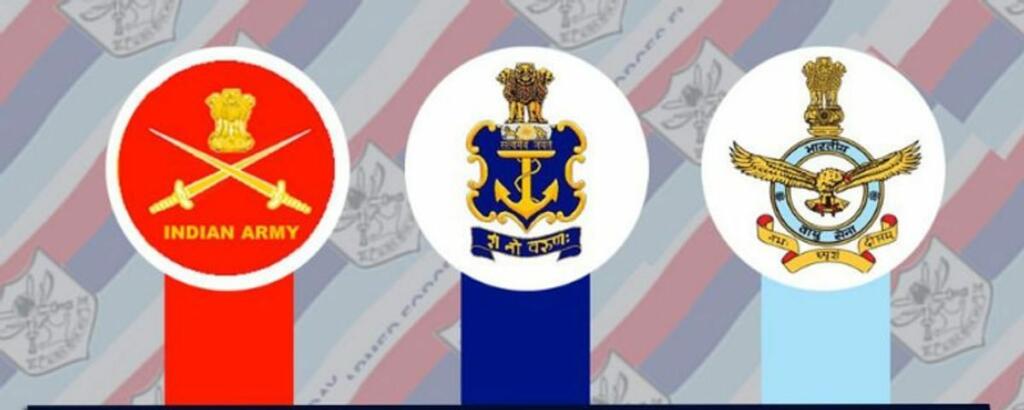The Indian armed forces are ready for a major transformation. Issues like inter-services rivalry and lack of synergy in the three military services are going to become an issue of the past.
- India has started the actual groundwork for creating four integrated theatre commands.
- An integrated maritime theatre command (MTC), an air defence command (ADC) and two land-based commands on the Eastern front (China) and Western Front (Pakistan) are to be created.
- The resources of the three services will be pooled in each integrated theatre command to make a theatre command self-sufficient in engaging and fighting the adversary.
- Each theatre command is to be led by a three-star General to streamline the command structure.
- Ultimately, there will be complete theaterisation of the Indian armed forces and single-service commands will be phased out.
So, you might wonder why the integration of the three military services is such great news. Well, there are many advantages directly related to unifying the command structure.
Multi-domain warfare:
The future wars, hybrid conflicts and military challenges that India will face will be remarkably different from the ones that India faced during its military campaigns in the 1970s or the 1980s or even during the Kargil war in 1999.
Military forces are moving from raising assets-based forces to capability-based forces. The focus of all modern militaries is to overwhelm the adversary with swift actions involving all elements of military firepower. This is being described as multi-domain warfare.
Kimberly Ponders, head of business development at Lockheed Martin’s C4ISR division said, “Multi-domain operations allows the warfighter to act and react to changing situations by using all domains – air, land, sea, space and cyber – to present dilemmas to an adversary at an overwhelming pace.”
With single-service commands, such multi-domain operations become impracticable. Coordinating at every stage of a fast-moving military conflict is not possible for two or three different military services functioning under different commands. Even during the Kargil War, the Indian Army launched “Operation Vijay” to beat back the Pakistan Army whereas, the Indian Air Force (IAF) launched a different operation code-named “Operation Safed Sagar”.
In the 1990s, different operations in the same war may have been manageable. However, India needs integrated theatre commands to ensure that a single Operation with cohesion in all forces is carried out in future military actions to reap the advantages of the multi-domain warfare concept.
Ensuring agility and reducing inter-service rivalry:
“A minute can determine the result of the battle, an hour the result of the campaign, and a day the fate of empires.” So, when it comes to military actions, agility and speed do matter a lot.
When you have a single General commanding all the elements of warfare that get devoted to an Integrated Theatre Command, the number of orders and stages of command get reduced drastically. After Russia created Joint Strategic Commands, it reduced the stages through which orders passed in the military command chain from 16 to 5.
If India has to carry out an Operation Parakram-like action in the future, an Integrated Theatre Command will lead to much quicker mobilisation because a single Commander will be able to instruct all military elements with a single order.
In a military action, all three conventional services of the armed forces become equally important. Hence, coordination and synergy are indispensable. But years of working in silos has undermined the spirit of synergy and jointness.
In June, this lack of coordination was on display when the Indian Navy (IN) and aircraft of the Indian Air Force (IAF) exercised with the USS Ronald Reagan Carrier Strike Group off India’s Thiruvananthapuram. The press release issued later however suggested that the exercise was between the IAF and the US Navy, and the IN wasn’t mentioned. Such lack of coordination of course leads to bad PR.
However, with theatreisation, we can expect much more cohesion and coordination between the three forces.
Two-front war scenario:
In the 21st century, the biggest conundrum facing the Indian military is a two-front war situation involving military action against China, as well as Pakistan. With two land-based Theatre Commands- one for the Western front and one for the Eastern front, India hopes to tackle such a war situation appropriately.
There may be an issue of resources, but the formation of Integrated Theatre Commands will also lead to a lot of clarity. At the end of the day, all three military services will be able to truly assess the quality and quantity of resources and military equipment that they need to acquire for meeting India’s security needs.
With theatreisation, India is thus looking to leapfrog into a new era of warfare to meet its contemporary security needs.
